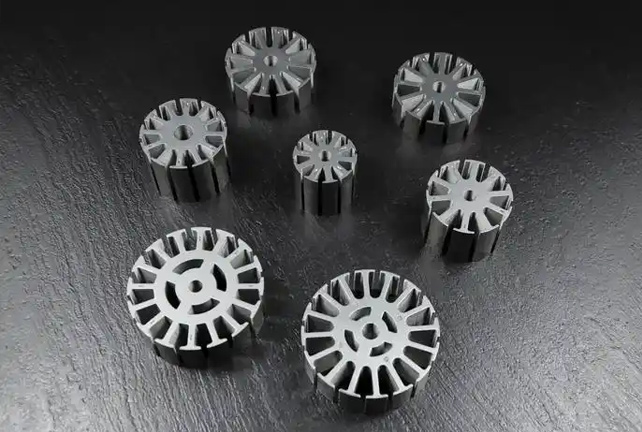Installing motor stators is a critical process in electric motor assembly and maintenance. Proper installation ensures optimal performance, longevity, and safety. Incorrect handling or installation can lead to motor failure, operational hazards, or even workplace injuries. This guide outlines the best practices for safely installing motor stators, covering preparation, handling, alignment, and testing.
1. Pre-Installation Preparation
1.1 Review Manufacturer Specifications
Before installation, thoroughly review the motor stator’s technical documentation, including:
- Dimensional drawings (inner and outer diameters, stack length)
- Electrical ratings (voltage, current, insulation class)
- Thermal and mechanical tolerances
- Installation torque values (if applicable)
1.2 Inspect the Stator
Conduct a visual and functional inspection to ensure the stator is free from defects:
- Check for physical damage (dents, cracks, or bent laminations).
- Verify insulation integrity (no signs of burns or moisture).
- Ensure windings are secure (no loose coils or broken connections).
1.3 Prepare the Work Area
- Clean the workspace to prevent contamination from dust or metal debris.
- Use anti-static mats if handling stators with sensitive insulation.
- Ensure proper lighting for accurate alignment and inspection.
1.4 Personal Protective Equipment (PPE)
Workers should wear:
- Cut-resistant gloves (to prevent injuries from sharp laminations).
- Safety goggles (to protect against metal shavings).
- Steel-toe boots (if handling heavy stators).
2. Safe Handling of Motor Stators
2.1 Lifting and Transporting
- Use appropriate lifting equipment (hoists, cranes, or forklifts) for heavy stators.
- Avoid manual lifting if the stator exceeds safe weight limits (typically >25 kg).
- Secure the stator with straps or clamps during transport to prevent drops.
2.2 Preventing Damage
- Avoid dropping or impacting the stator, as this can deform laminations or damage windings.
- Store stators vertically (if possible) to minimize stress on windings.
- Use non-metallic tools when adjusting windings to prevent short circuits.
3. Installation Process
3.1 Aligning the Stator in the Housing
- Ensure the housing is clean and free of burrs that could damage the stator.
- Use alignment pins or guides (if provided) for precise positioning.
- Check concentricity with a dial indicator to avoid misalignment.
3.2 Securing the Stator
- Follow torque specifications when tightening bolts to prevent distortion.
- Use lock washers or thread-locking compounds to prevent loosening.
- Avoid over-tightening, which can warp the stator core.
3.3 Electrical Connections
- Verify phase matching between stator windings and power supply.
- Use proper crimping or soldering techniques for terminal connections.
- Insulate all exposed conductors to prevent short circuits.

4. Post-Installation Checks
4.1 Mechanical Inspection
- Check for free rotation (if the rotor is installed).
- Verify no rubbing or scraping occurs between stator and rotor.
- Ensure cooling fins or vents are unobstructed.
4.2 Electrical Testing
- Perform a megger test (insulation resistance test) to confirm no ground faults.
- Measure winding resistance to ensure balanced phases.
- Conduct a high-potential (hipot) test if required by safety standards.
4.3 Trial Run and Monitoring
- Start the motor at low voltage to detect unusual noises or vibrations.
- Monitor temperature rise during initial operation.
- Check for electromagnetic interference (EMI) if applicable.
5. Common Installation Mistakes to Avoid
5.1 Incorrect Alignment
- Misalignment can cause vibration, overheating, and premature failure.
- Always use precision tools (dial indicators, laser alignment devices).
5.2 Poor Winding Handling
- Bending or pinching windings can lead to insulation breakdown.
- Use soft-faced mallets for adjustments instead of metal tools.
5.3 Ignoring Environmental Factors
- Moisture or chemical exposure can degrade insulation.
- Store stators in a dry, temperature-controlled environment.
5.4 Skipping Safety Checks
- Never bypass electrical tests (e.g., insulation resistance checks).
- Always verify torque values to prevent mechanical failures.
6. Safety Considerations for High-Voltage Stators
For stators rated above 600V:
- De-energize and lock out/tag out (LOTO) before installation.
- Use insulated tools rated for high-voltage work.
- Wear arc-flash protective gear if testing live circuits.
7. Training and Documentation
- Train personnel on proper stator handling and installation techniques.
- Maintain installation records (torque values, test results) for future reference.
- Follow industry standards (IEEE, IEC, or NEMA guidelines).
Conclusion
Installing motor stators safely requires careful planning, proper tools, and adherence to best practices. By following these guidelines, technicians can minimize risks, ensure motor reliability, and extend operational life. Always prioritize safety checks and quality control to prevent costly failures or accidents.

Copyright © Zhejiang Xinzheng Electromechanical Technology Co., Ltd. All Rights Reserved.
This website uses cookies to ensure you get the best experience on our website.
Comment
(0)